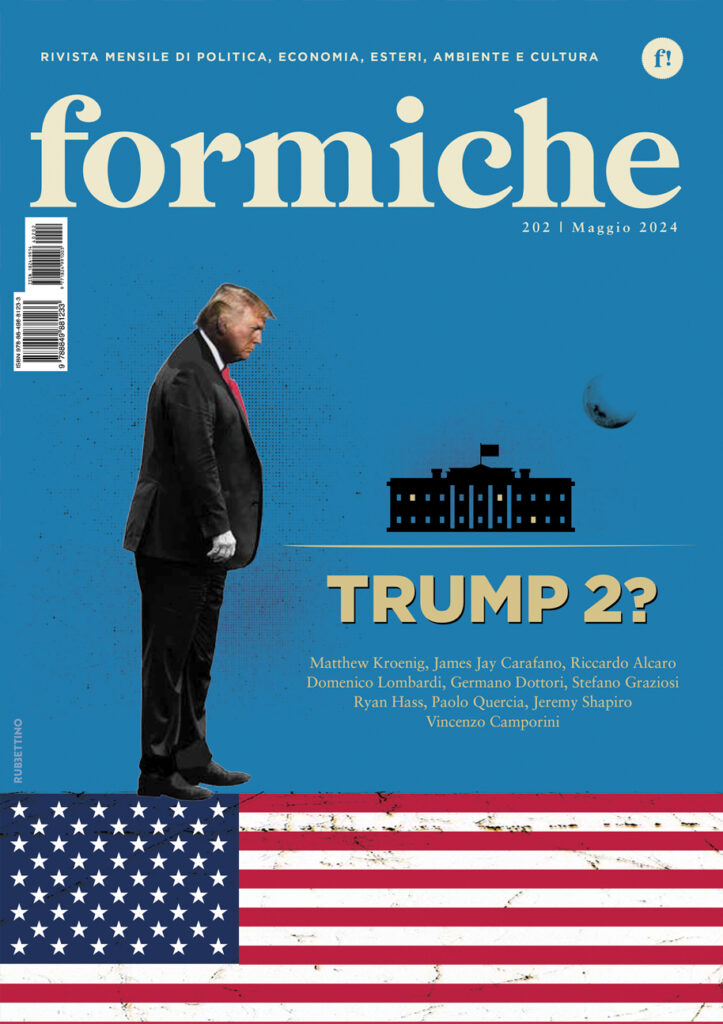On one hand, Europeans distrust Chinese tech; on the other hand, the transatlantic relation in the fields of digital technology is stunted. The world risks splitting in three cyber spheres, but Europe’s Gaia-X project could be an antidote to that. Jean-Pierre Darnis, associate professor of International Relations at Université Côte d’Azur and scientific advisor at the Italian Institute for International Affairs (IAI), explores what lies ahead in the geopolitics of cloud computing.
During the recent Gaia-X summit we have seen significant progress being made in the construction of a European cloud infrastructure, which is set to begin functioning between the end of 2020 and the beginning of 2021.
The Italian minister for innovation, Paola Pisano, confirmed Italy’s interest in the initiative. It now counts 29 participating Italian companies, including TIM, Intesa Sanpaolo, Engineering, ENEL, Leonardo, Poste Italiane and Sogei.
Launched in August 2019 by the German minister of economy, Peter Altmaier, the Gaia-X initiative was quickly consolidated by intercepting the priorities that had already been defined in the digital agenda of French President Emmanuel Macron. The project also enjoyed the support of the European Commission which, through Commissioner Thierry Breton (former CEO at Atos) has been very committed to the issue of technological and digital sovereignty.
The Covid crisis further emphasized the EU’s interest in controlling the production and autonomy of several sectors to increase its resilience and to avoid foreign interference, such as takeovers by companies that foreign groups deem strategic.
The enhancing of this political priority also crossed paths with another issue in the 2019 governmental agendas: the potential Chinese interference through technological equipment installed in 5G networks. The US’ position on this matter was clear-cut, as it brought forward the security flaws of systems equipped with Chinese components and urged European allies to make a field choice.
On the other hand, a series of dossiers regarding the use of personal data on behalf of governments and authorities raised suspicions between the EU and the US. This has repercussions on justice (such as the ability of American authorities to use of the personal data of European citizens that flows through American platforms, or the matter of transmitting data for justice processes) and on espionage activities (as revealed by the Snowden case).
Europeans distrust the Chinese system, also due to China’s different concept of privacy and role of the state. And yet, the transatlantic relationship in the digital and technology field is no longer as natural as it was during the second half of the Twentieth century. Thus, the world risks splitting in three–USA, China, and UE –and their spheres of influence might correspond to their new forms of digital sovereignty.
Europe still remains bound to the US’ digital sphere. European platforms simply do not exist, and the vast majority of European digital activities flows through the clouds of the American behemoths.
Moreover, the US did not hold back in pushing their European allies to do away with the Chinese technological sphere.
Still, Europe is developing its autonomous capabilities and striving to impose rules consistent with its norms and visions. The importance of the European regulatory path has been set out with the GDPR. Today we are going toward a European cloud –that is, Gaia-X –and it appears to be, first and foremost, an industrial opportunity for those European companies that have been excluded from this sector, and who aspire to develop capabilities and products.
By the way, it should be noted that Microsoft, Oracle, Intel, Palantir, Oracle, Salesforce, Alibaba and Huawei have all adhered to the Gaia-X project. These extra-EU companies will not be able to access the program’s control room; instead, they will be partners. As such, they will be in the position to receive those infrastructures and regulations that are being defined around the European cloud, and they will be able to influence choices, as explained by Commissioner Breton.
This example could prove a particularly interesting path for Europe, that of pushing forward its own investments and initiatives that can result in heightened technological and regulatory capabilities. This path would not necessarily foster a division into sealed blocs, it could rather produce better negotiation terms, and thus promote openness between different systems.
This approach would surely be constructive without being naïve. It can be used to take advantage of the US administration change to renew the terms of the Atlantic Alliance. We can rebuild the latter, taking into account the technological complementarity between the two sides of the Atlantic, which is different from an all-out contrast with the Chinese world.
This article appeared in Formiche #164 and was translated from the original Italian by Otto Lanzavecchia








